#Docufiction
Explore tagged Tumblr posts
Photo
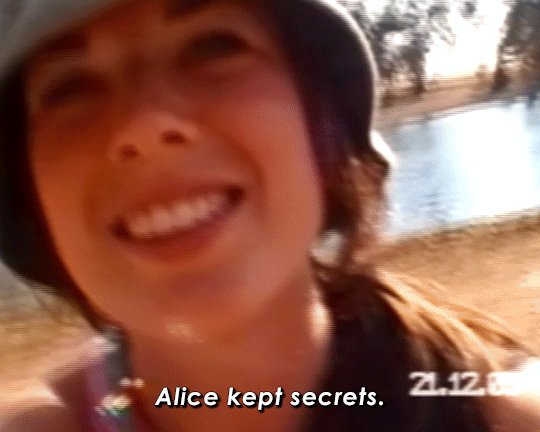





Alice kept secrets.
Lake Mungo (2008) dir. Joel Anderson
#lake mungo#horror#horror movies#horroredit#lake mungo 2008#horrorgifs#docufiction#found footage#joel anderson#talia zucker#gif#film#alice palmer#australian cinema#australian horror#filmedit#alice kept secrets#dailyflicks#moviegifs#filmgifs#cinemapix#tvandfilm#filmtvdaily#fyeahmovies
2K notes
·
View notes
Text
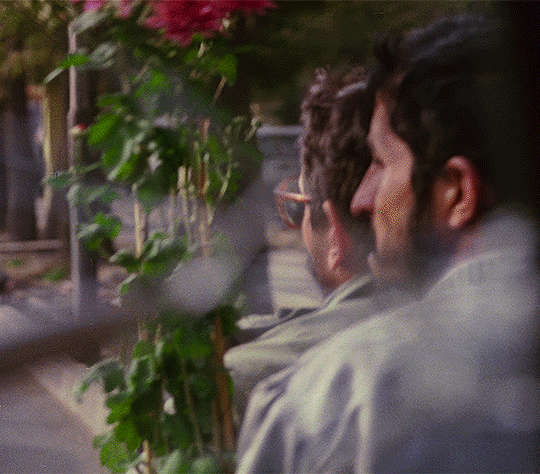
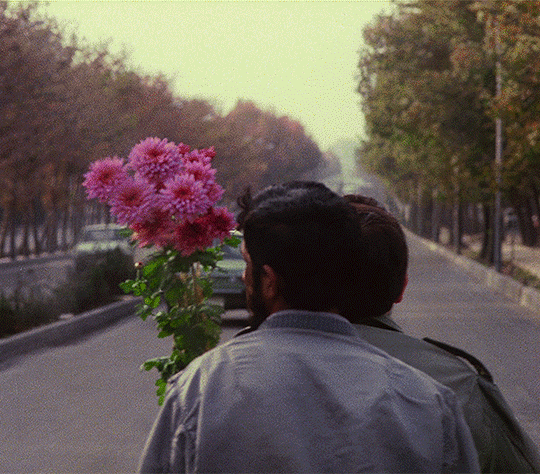
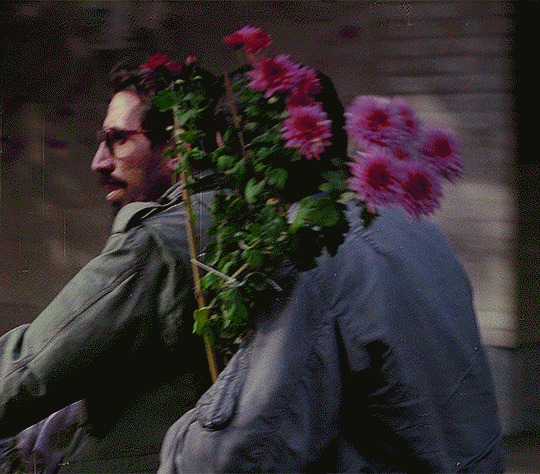
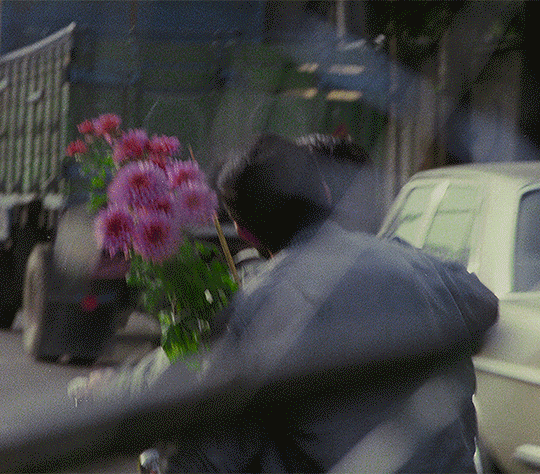
کلوزآپ ، نمای نزدیک [Close-up] (1990) dir. Abbas Kiarostami | Biography/Docufiction
#close up 1990#close-up 1990#flowers#motorcycles#cinema#film#movies#iran#کلوزآپ ، نمای نزدیک#klūzāp#close up#nemā-ye nazdīk#abbas kiarostami#mohsen makhmalbaf#hossain sabzian#docufiction#documentary#homoeroticism#persian#iranian#dahlia#motorcycle#motorbike
422 notes
·
View notes
Text










David Schickele | Bushman, 1971, United States & Nigeria
#David Schickele#Paul Eyam Nzie Okpokam#Elaine Featherstone#film#docufiction#documentary#1970s#bw#san francisco#Nigeria
26 notes
·
View notes
Text
Taman-taman (Park) (2024) Review
Director: So Yo-hen
Runtime: 101 minutes
Language: Indonesian and Javanese audio; Mandarin (繁體) and English subtitles
Certification: PG13 (Singapore; smoking scenes)

Via SGIFF.com
Can Taman-taman (Park) be considered a documentary? The film seemed like one to me as I watched it. But there were some elements that felt contrived. Still, it won three prizes at the 14th Taiwan International Documentary Festival (TIDF) earlier this year. “The Grand Prize of the Asian Vision Competition goes to a more or less non-fiction film,” says the jury comments. I like that description: “more or less non-fiction”.
Well then, it’s a documentary talking about the experiences of Indonesian migrants in Taiwan. I say “talking” because that’s what the bulk of the film depicts: two Indonesian men, Asri and Hans, having conversations in Tainan Park. It’s mostly through their conversations and through poetry rather than visuals that we learn about what they and fellow migrants experience.
Asri contributes much of the poetry presented in Taman-taman, including a poem about a worker who picks up his girlfriend on an electric scooter. We do get to see Indonesian scooter enthusiasts hanging out in the park, and a group—either the same one or another—singing together, but other than these, we don’t observe the discussed events. Though using this elliptical technique can make the audience feel detached, it means the film avoids exploitation of the subjects’ struggles for the sake of drama, a risk of documentary filmmaking.
Speaking of the scooter enthusiasts, they appear in one of those parts that feels contrived. Because it is. After Asri and Hans talk about the scooterists, they get up from a table and walk through the park. Scooterists soon circle around them in a neat line, and the two carry on as if nothing’s unusual. In a Q&A session at the 35th Singapore International Film Festival (SGIFF35), director So Yo-hen said that the first time they shot this scene, some scooterists did appear but not as many. After the filmmakers got more scooterists, Asri and Hans repeated the scene.
I’m guessing the decision to recreate the scene this way was to maintain viewer interest. I recall hearing light laughter from the audience at this moment.

But I wonder if there’s some other reason for the fictional elements in the film. For example, the radio station that Asri and Hans pretend to run, inspired by stones with embedded speakers found around the park. The two sit in a guard hut when they “host” their radio show. With its bright red lightbulb acting like an on-air sign, the hut does look as if it could be a studio. Hans blends Indonesian and Mandarin to come up with the name Ini Radio Yinni, meaning “This is Radio Indonesia”. The concept of the programme is to share stories of Indonesian migrants in Taiwan, accompanied by readings of poetry inspired by these experiences.
In a Facebook post from May, Asri says that the Taman-taman “film project sought to give voice to the experiences of migrant workers in Taiwan, with all the ups and downs of their lives”. So why blend fiction and reality? Why not use non-fiction material only? Why do we mainly hear about the experiences of migrant workers through Asri and Hans, and not through the people they speak about as well?
According to a bio provided by the 12th Momentum biennale, So Yo-hen and his filmmaking group Your Bros. “take filmmaking as a method to re-interpret reality.” In film critic Jason Tan Liwag’s review of Dorm (2021), a previous work by the group, he states that “documentary is not reality itself, but a reflection, refraction, and reconstruction of an accumulation of experiences.” Maybe this is what Your Bros. are trying to get the audience to remember.

Throughout Taman-taman, the filmmakers remind us that what we see is through their lenses. The opening scene directly shows us one crew member who’s helping to set up the shot. We also hear a voice telling Asri and Hans, who describe their roles in the film as “actors”, that they can start. Each time Ini Radio Yinni “airs”, the hosts tell listeners not to worry if they see people filming in Tainan Park, because the film might not actually be made. In the last scene that Asri appears in, there’s crew members onscreen again—well, the shadows of them and their filmmaking equipment are onscreen, all following Asri.
After my first watch, I thought it was unlikely that I’d write a full-length review of Taman-taman. I related to Asri during a scene in which he and Hans discuss their thoughts on the project so far. Asri says he’s tired of filming and doesn’t even understand what message the filmmakers are trying to convey. I couldn’t see where the film was going and was getting bored. On the other hand, Hans seems satisfied with the idea of letting the audience come up with their own ideas and says that the more he works on this project, the more interested he gets.
In the process of writing this review, I realised Taman-taman is more intriguing than I originally thought. I still relate more to Asri’s confusion than to Hans’ playful curiosity, though.
Rating: 3.5/5
Thank you to SGIFF for the Cinephile Pass and for the screenings of Taman-taman.
#film review#movie review#film criticism#sgiff#sgiff35#35th singapore international film festival#taman-taman (park)#taman-taman#公園#taiwanese cinema#taiwanese film#documentary#docufiction#so yo-hen#蘇育賢#your bros. filmmaking group#你哥影視社
3 notes
·
View notes
Text
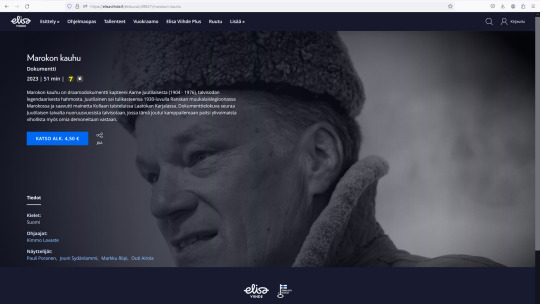
English summary: Marokon Kauhu, the docufiction that I directed, on Finnish war hero Captain Aarne Juutilainen (1904 – 1976), is now streaming in Finland on Elisa Viihde.
Marokon Kauhu -dokumentti on nyt katsottavissa Elisa Viihteessä.
https://elisaviihde.fi/elokuvat/49837/marokon-kauhu
(Sivulla oleviin krediitteihin pyysin levittäjä VL Mediaa tekemään ainakin sellaisen korjauksen, että alkuperäisen Marokon Kauhu -lavamonologin kyllä ohjasi Kimmo Lavaste, mutta itse olen varsinaisen dokkarin ohjaaja ja käsikirjoittaja. Pari muutakin korjausta tai täsmennystä voisi myös tehdä, mutta mennäänpä nyt toistaiseksi näillä…)
#MarokonKauhu#docufiction#AarneJuutilainen#documentaryfilm#2023#2024#March2024#studentwork#ElisaViihde#VLMedia#wardocumentary#dokumenttielokuva#draamadokumentti#dokkari#WWII#SecondWorldWar#toinenmaailmansota#talvisota#WinterWar#1939#1940#Kollaa#KollaaKestää#Suomi#Finland#Karelia#Sortavala#VoionmaaInstitute#Voitsi#VoionmaanKoulutuskeskus
8 notes
·
View notes
Text
The North American tressym is evolved from arctic Kritters which evolved from domestic cats.carnivorous predators of the icy wastes that once were Canada north and Central America aswell as being very fierce animals.their main food source normally is Ginormo chinchillas and rarely arctic chimps.
The South American tressym is an omnivore evolved from gliding kritters which evolved from domestic cats.the South American tressym is a usually peaceful animal that is somewhat domesticated still unlike their cousins the North American tressym.adapted to the hot deserts of South America they mainly eat berries and small bugs.being more prey than predator in their ecosystem and being hunted by desert apes normally.

#speculative worldbuilding#speculative ecology#speculative zoology#speculation#speculative evolution#speculative biology#speculative fiction#docufiction
10 notes
·
View notes
Text
The Exiles (1961)
Every movie is documentary. Whether or not the scene-to-scene narrative of a picture is a record of True Events (manipulated, as they all are, by the filmmakers’ selective curation), the picture itself is a record, a document of the past. This becomes more apparent the older the picture has aged, as its performers, locations, and cultural context are cyclically replaced in the real world but…

View On WordPress
#alcoholism#brandon ledet#docufiction#drama#kent mackenzie#los angeles#reviews#rock n roll#the exiles
1 note
·
View note
Text
90 Movies in 90 Days: Moi un Noir (1959)
Every day until March 31, 2024 I will be watching and reviewing a movie that is 90 minutes or less. Title: Moi un Noir Release Date: March 12, 1959 Director: Jean Rouch Production Company: Les Films de la Pléiade Summary/Review: Rating: ***1/2 This film documents a week in the life of immigrants from Niger who have come to Abidjan, the capital of Côte d’Ivoire to find work. The premise of the…
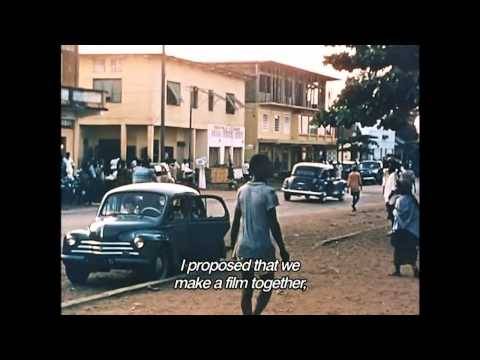
View On WordPress
0 notes
Text






close-up (1990) dir. abbas kiarostami
#کلوزآپ ، نمای نزدیک#close up#close-up#abbas kiarostami#mohsen makhmalbaf#film aesthetic#film stills#film#iranian films#middle eastern cinema#90s movies#90s docufiction#90s aesthetic#iranian cinema
55 notes
·
View notes
Note
film rec! The Company of Strangers (1990): seven elderly women and their driver have their bus break down on a tour in the backwoods of Quebec and seek shelter in an abandoned cottage. it's docufiction - there was an outline but no real script, and the women are all playing themselves and improvising conversations with each other. the setting is so beautiful and the women!! if you have a VPN you can watch it for free through the NFB site 📽️
it's also on tubi and kanopy! i've seen it and can back up everything you say :) check it out y'all
24 notes
·
View notes
Photo


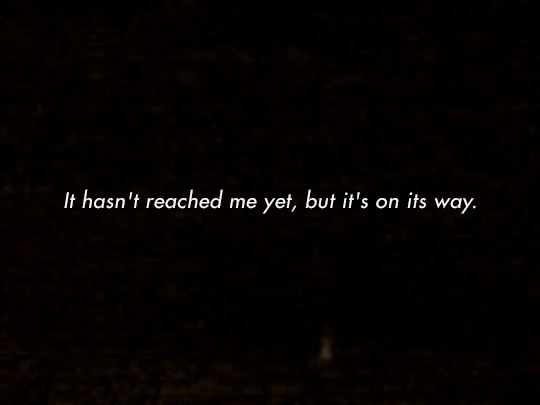




Would you like to tell me about what happens in these dreams?
Lake Mungo (2008) dir. Joel Anderson
#lake mungo#horror#horror movies#horroredit#lake mungo 2008#horrorgifs#docufiction#found footage#joel anderson#talia zucker#gif#film#australian cinema#australian horror#dream#filmedit#alice palmer#dailyflicks#fyeahmovies#moviegifs#filmgifs#cinemapix#tvandfilm#filmtvdaily#usersource#userfilm
542 notes
·
View notes
Text
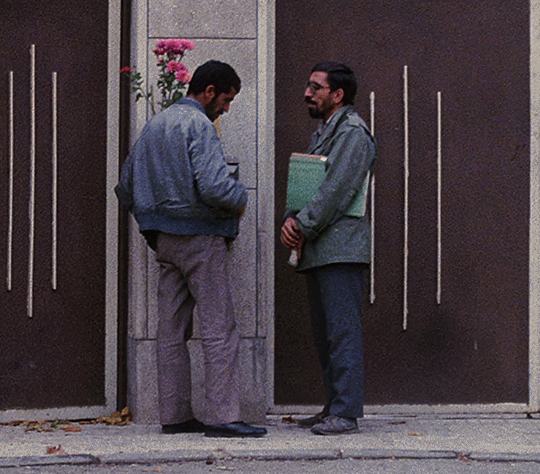
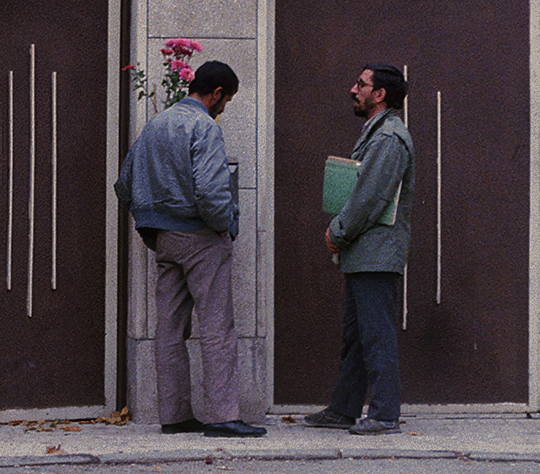
کلوزآپ ، نمای نزدیک [Close-up] (1990) dir. Abbas Kiarostami | Biography/Docufiction
#close up 1990#close-up 1990#cinema#flowers#film#movies#کلوزآپ ، نمای نزدیک#klūzāp#close up#nemā-ye nazdīk#abbas kiarostami#mohsen makhmalbaf#hossain sabzian#iran#docufiction#documentary#affection#homoeroticism#persian#iranian#dahlia
146 notes
·
View notes
Text
hey do you guys remember how I said that I was going to use patreon to write up content that would be WILDLY too long for tumblr? yeah. this is uuuuuh a little less than 6000 words about a bad Animal Planet series from 2008 that no one watched but me and my sister.
and here's part of the introduction under the cut for freebies, in case you want a little sample:
If you weren’t a painfully introverted animal fact kid in the early 2000s it’s almost impossible to explain the degree of sway that Animal Planet and its shows held over me as a child. Meerkat Manor, Animal Cops, The Most Extreme, The Little Zoo That Could, Prehistoric Planet, River Monsters, all of Steve Irwin’s work, and truly any and all non-serialized programming about any animal imaginable. I ate it all up, even the terribly boring half-hour programs like Backyard Habitat and Petfinder that they only played in the weird wee hours of the morning.
Crucially, this programming is mostly of a nonfiction bent. Prehistoric Planet uses a framing device involving the use of time travel to bring extinct animals into the present to live in a zoo, but ultimately they’re trying to teach you some facts about some beasts, and while Meerkat Manor was definitely anthropomorphizing and editorializing the drama those meerkats experienced, it was at least rooted in the very real Kalahari Meerkat Project, which has been intensively documenting the behavior of meerkat mobs for many meerkat generations.
But then we get into the oddballs. In 2004 Animal Planet aired Dragons: A Fantasy Made Real, a British “docufiction” produced for Channel Four that sought to contextualize the nearly-global mythology of dragons in real history and biology, complete with CGI recreations of dragons in their “natural habitats.” That’s all fine and good; there’s nothing wrong with using a fake thing to teach people about real animals’ evolution and anatomy. The Loch Ness Monster episode of River Monsters is excellent for this, as you can tell that host Jeremy Wade (angler, freshwater detective, and criminally fuckable old man) doesn’t expect to find a monster literally at all and is just taking the opportunity to introduce his audience to animals they might not otherwise know about, including the noble Greenland shark. He pulls the same trick again in a later episode where he’s sent to discover the “truth” behind sea serpents and winds up diving in search of the elusive oarfish.
Dragons is… not doing that. Instead it offers up a framing device following a completely fictional paleontologists who “suggests the theory that a carbonized Tyrannosaurus rex skeleton on display was killed by a prehistoric dragon” (thanks, Wikipedia) and then has to go on a quest to save his career by proving that dragons totally existed and he’s not crazy. And he’s not! The piece ends with him discovering straight up for-real dragon bones in the Carpathian Mountains. If you were, say, an impressionably soft-brained 8 year old watching this, well holy shit. Congrats! It turns out dragons are real and nobody knows but you.
Why did Animal Planet air this? God only knows, but it wouldn’t be the last time they dabbled in this shit. 2012 saw another piece by the same creator, Charlie Foley, called Mermaids: The Body Found which posited that various governments are holding merpeople captive and also relied on the infamously eugenicist aquatic ape theory to justify how merpeople could exist. The CGI on that one creeped me the fuck out, although I was at least old enough by then to recognize it wasn’t real.
Between those two docufictional farces, Animal Planet got a little freaky and rolled out some fake factual content of their own: three season of the TV show Lost Tapes (2008-2010, RIP), which purportedly showed “found footage” from incidents of humans having terrifying encounters with cryptids and fighting to escape with their lives. Interspersed with the fully fictional stories were segments of experts talking about folkloric history and speculating as to how creatures like Sasquatch and sea serpents could be real, which was an admirable effort to make it educational but often fell pretty short. There’s a werewolf episode where their expert weakly offers up that there are tons of transformations in nature, like caterpillars turning into butterflies. Notably that has absolutely nothing in common with a human turning rapidly into a wolfbeast and then shifting back, but they tried! They stopped trying as hard by season three, by which point they were throwing any and every beastie they could think of at the wall: there are episodes dedicated to zombies, a poltergeist, two different types of vampires, and the Aztec god Quetzalcoatl.
Also straining belief was the dedication that some POV characters had to keeping their cameras rolling. I don’t blame the writers for that; it’s hard coming up with a fresh gimmick for “found footage” in every episode. Some of them, like characters wearing body cameras, are pretty smart; others, like a teenage girl continuing to film on her phone while being hunted by the Jersey devil, are not. They’re very much running on horror movie rules; the characters are as dumb as they need to be to make the plot go. To the show’s credit the dumdums are frequently punished, and it’s not uncommon for every single named character to end up dead at the hands (or claws, fangs, whatever) of the monster of the week.
Needless to say, as a 12 year old I thought this was extremely edgy and cool. I was old enough to recognize that the so-called found footage was fake and that the acting was mostly very bad, but I liked cryptids and some of the show’s better episodes could still creep me right out. I think geeky 12 year olds who like to get a little freaked out on purpose are probably the ideal target demographic for this show, followed by nostalgic 20-somethings who have seen every episode several times.
(Hi, editor’s note: having completed this list it turns out there are WAY more episodes than I thought and I fully Do Not Recall some of them, so egg on my face.)
51 notes
·
View notes
Text

Ohjaamani Marokon Kauhu -draamadokumentin arvio Kokkolassa ilmestyvässä Keskipohjanmaa-lehdessä. Kokkolan ohella dokumenttia pakerrettiin hyvän matkaa myös Tampereella, ja itse dokkari sijoittuu paljolti Laatokan Karjalaan, toki piipahdetaan myös Marokossa ja Pariisissakin. (Kuva: Markku Riipi)
A review of the Marokon Kauhu docufiction that I directed, Keskipohjanmaa paper, Kokkola, Finland.
#MarokonKauhu#draamadokumentti#AarneJuutilainen#PauliPoranen#2023#2024#March2024#talvisota#toinenmaailmansota#Kollaa#Karjala#1939#1940#pHinnWeb#WinterWar#SecondWorldWar#WWII#Karelia#documentaryfilm#docufiction#dokumenttifilmi#dokkari#wardocumentary#ElisaViihde#VoionmaaInstitute#VoionmaanKoulutuskeskus#KeskipohjanmaanKoulutusyhtymä#MediakeskusLime#Kpedu#Sortavala
0 notes
Text

Joan Chen in 24 City (Jia Zhang-ke, 2008)
Cast: Jianbin Chen, Joan Chen, Liping Lü, Tao Zhao. Screenplay: Yongming Zhai, Jia Zhang-ke. Cinematography: Yu Wang, Nelson Lik-wai Yu. Production design: Qiang Liu. Film editing: Kong Jinglei, Xudong Lin. Music: Yoshihiro Hanno, Giong Lim.
Jia Zhang-ke's 24 City takes a docufictional approach to the history of modern China, telling the story of the conversion of a former aircraft parts factory into a planned community, and by extension commenting on the past, present, and implied future of the country and its people. Jia mixes scenes in which actors impersonate factory workers and members of their families with scenes in which the actual workers appear before the camera. The stories are sometimes painful, as in the one in which a woman tells how she was separated from her little boy during the war and never saw him again, and sometimes poignant, such as the narrative of a smartly dressed, contemporary young woman who was shocked to witness the unpleasant conditions in which her mother worked. Their narratives are interspersed with musical sequences and snippets of poetry, including some lines by W.B. Yeats that prove oddly resonant. The result is an absorbing journey into a world unfamiliar to most of us.
2 notes
·
View notes
Text
learning interesting new things about myself watching the docufiction the company of strangers (1990) in which six elderly ladies mostly improvise throughout the movie talking about their real lives
well there's a really handy and funny 68-year old nun it turns out i'm wildly attracted to. like i'd be SO down


5 notes
·
View notes